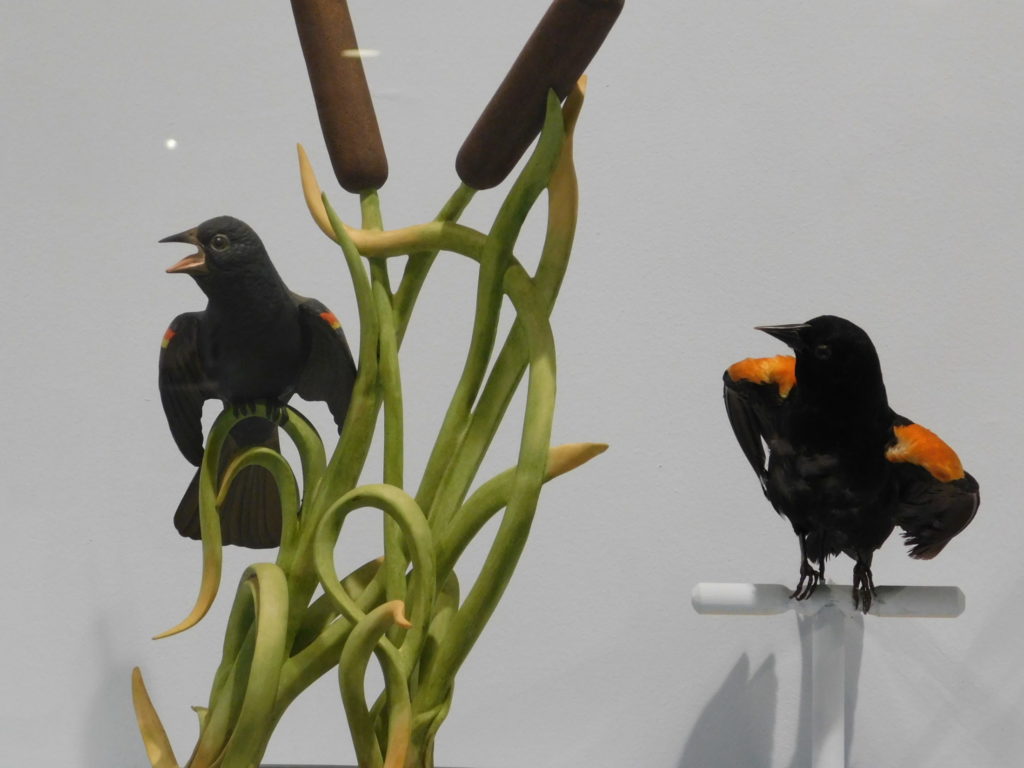John Lawson arrived in Charleston, South Carolina, in 1700. At the end of the year, he set off with nine other people on a two month long excursion through South and North Carolina, arriving on the Pamlico River on the 24th of February, 1701. Along the way, they encountered passenger pigeons more than once. On one occasion, after crossing a river, they “saw several Flocks of Pigeons, Field-Fares, and Thrushes.” (1709:42) Several days later, while waiting for one of the men to return with some horses that had run off, the others
went to shoot Pigeons, which were so numerous in these Parts, that you might see many Millions in a Flock; they sometimes split off the Limbs of stout Oaks, and other Trees, upon which they roost o’ Nights. You may find several Indian Towns, of not above 17 Houses, that have more than 100 Gallons of Pigeons Oil, or Fat; they using it with Pulse, or Bread, as we do Butter, and making the Ground as white as a Sheet with their Dung. The Indians take a Light, and go among them in the Night, and bring away some thousands, killing them with long Poles, as they roost in the Trees. At this time of the Year, the Flocks, as they pass by, in great measure, obstruct the Light of the day.(1709:44-45)
When Lawson wrote his book several years later, he incorporated additional knowledge he had obtained about the Carolinas. According to Lawson, pigeons did not breed along the coast of the Carolinas (“They leave us in the Summer.” 1709:140), but large flocks did roost there during the winter. He intimates that the size of these flocks could vary by year, with a particularly large number of pigeons seen in 1707, “the hardest Winter that ever was known” (1709:141) in Carolina. Yet these flocks paled in comparison to “the great and infinite Numbers of these Fowl, that are met withal about a hundred, or a hundred and fifty, Miles to the Westward of the Places where we at present live; and where these Pigeons come down, in quest of a small sort of Acorns” (1709:141)
Recalling his winter expedition, he wrote how
such prodigious Flocks of these Pigeons…had broke down the Limbs of a great many large Trees all over those Woods, whereon they chanced to sit and roost; especially the great Pines, which are a more brittle Wood, than our sorts of Oak are. These Pigeons, about Sun-Rise, when we were preparing to march on our Journey, would fly by us in such vast Flocks, that they would be near a Quarter of an Hour, before they were all pass’d by; and as soon as that Flock was gone, another would come; and so successively one after another, for great part of the Morning. (1709:141)
These flocks may have been traveling from roosts to feeding areas, or may have been working their way north to nesting grounds. Lawson asked the local natives “where it was that those Pigeons bred, and they pointed towards the vast Ridge of Mountains, and said, they bred there.” (1709:142)

References:
Lawson, John
1709 A New Voyage to Carolina; Containing the Exact Description and Natural History of That Country: Together with the Present State Thereof. And A Journal of a Thousand Miles, Travel’d Thro’ Several Nations of Indians. Giving a Particular Account of Their Customs, Manners, &c. London.
Powell, William S., ed.
John Lawson, 1674-1711. In Dictionary of North Carolina Biography. The University of North Carolina Press. http://docsouth.unc.edu/nc/lawson/bio.html










